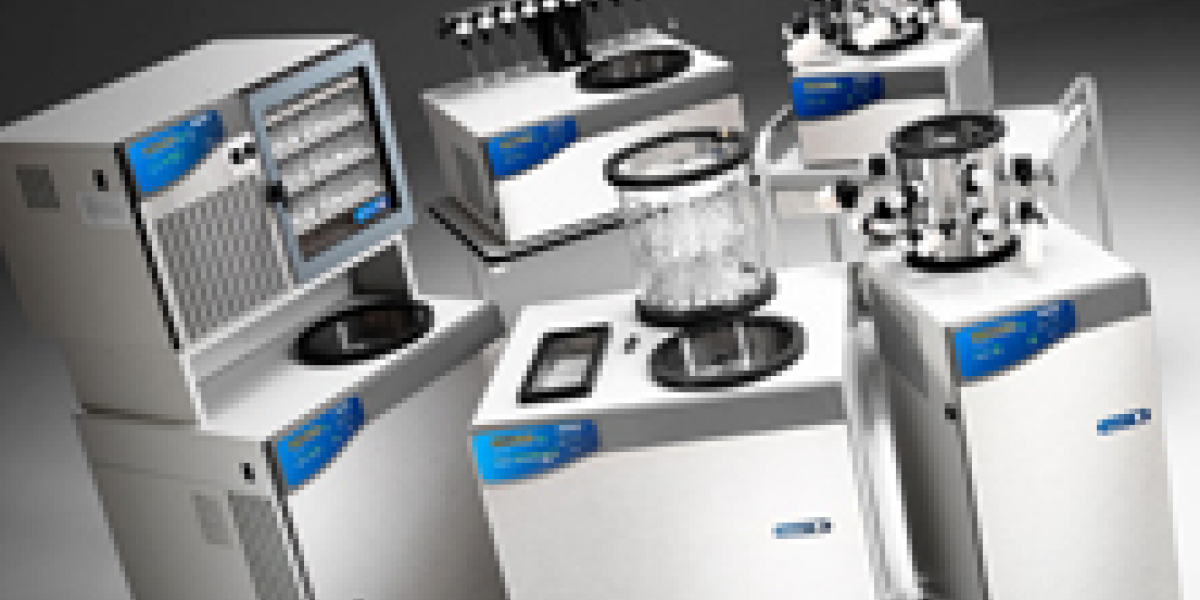5 common myths about lyophilization

Whether you are an experienced freeze dry user or you are selecting your first new freeze dry system, please take a moment to read the truth behind these five common myths about lyophilization. Knowing these facts can help you develop a better lyophilization methodology, or assist you in troubleshooting if the need occurs.
MYTH #1: “The vacuum is the most important, driving force in lyophilization.”
Many people think the vacuum “sucks” the moisture out of a sample during lyophilization, which is not true. Instead the vacuum creates an atmosphere that favors sublimation. During sublimation the solid ice will transform directly into a vapor or gas without first transforming into a liquid. The vacuum simply encourages this phase change and evacuates the molecules that have undergone the phase change into a gas away from the sample. In fact, a deeper vacuum level is not always better.
The biggest driving force in lyophilization is the vapor pressure difference that occurs between the sample temperature and the colder condenser temperature. The water molecules are drawn to the coldest spot in the system, which is the condenser. A minor lyophilization process occurs in your deep freeze at home: “freezer burn” in a food item is essentially a part of the food that has undergone sublimation. The moisture leaves the product and collects on the freezer coils. Obviously, this happens without a vacuum pump!
MYTH #2: “A colder condenser is always better.”
A colder condenser is not always better. The optimal condenser temperature for a freeze drying system is decided by the freezing temperature or eutectic temperature of a sample. In order to lyophilize, the condenser must be 15°C to 20°C colder than the sample. For an aqueous sample, a -50°C condenser is adequate, and a condenser with colder temperature will not speed up the lyophilization. It will, however, add costs and unnecessary complexity to your freeze dry system. Samples that contain solvents with low freezing points require a colder condenser.
Once the proper temperature is determined, the next requirement that should be considered is the load the condenser can handle. If a condenser is not properly sized to the sample load, the condenser can be overwhelmed by the amount of vapor that it must handle, and it may not be able to maintain the temperature level. Sample temperature as well as the condensor’s capacity (commonly stated in liters per hour) should be considered when selecting a freeze dry system.
MYTH #3: “The sample temperature probe displays the true sample temperature.”
The truth is, although the sample probe reading is, in most cases, a very close reflection of the actual sample temperature, it cannot always be perfectly accurate. The probe itself will have an effect on the sample it is placed into. The probe will influence how the sample freezes, including the temperature at which the sample freezes, so it may not be an accurate representation of the other samples.
As the drying front moves through the sample, the reading will be influenced by the location of where the probe is placed within the sample. Often the probe and its wire cable will cause cracks in the ice that allow the sample with the probe to lyophilize more quickly than the other samples.
MYTH #4: “A deeper vacuum will make the sample freeze dry faster.”
In primary drying, faster sublimation rates occur when the vapor pressure in the system is 50% of the vapor pressure above the product, not at the deepest vacuum levels. The speed of lyophilization is influenced by the heat that is applied to a sample.
Since the temperature difference between the condenser and the sample drives the speed of the lyophilization, the bigger the temperature difference, the faster the sublimation. It is hard to transfer heat to a sample under deep vacuum levels. Because samples cannot be heated as easily under deep vacuum, there is no benefit to pulling the vacuum level down to the deepest level once the minimum required vacuum level is reached for primary drying. However, during secondary drying, when the bound water is being sublimated, a deep level of vacuum is required.
MYTH #5: “The temperature displayed on a tray dryer is the shelf temperature.”
The shelf temperature reading on a tray dryer is the inlet temperature of the fluid that is flowing within the shelves. The sample temperature will vary from this temperature, so it is recommended to use sample temperature probes for a much more accurate reading. If a temperature sensor were placed on the fluid outlet as it leaves the shelf, it may be different, since the fluid temperature changes as it moves through the shelf.
It is best to always specify a temperature rate change for the shelves when programming the shelf temperature changes. The trays will then change temperature at a uniform rate for all samples. The specific rate for the shelf temperature should leave capacity for the shelf compressor to accommodate the load that will be generated by raising all the samples to the higher temperature. If the shelf temperature does not change with a rate restriction, the temperature change will be maximized, without consideration of the load and a large difference in the shelf temperature between the inlet and the outlet side of the shelf can develop.
If a temperature rate change is set, the shelves will be able to accommodate the load of the samples and not create a wide variance of temperatures from one vial to another on the same shelf.
| chevron_left | Safety First: OSHA Lab Standards webinar | Articles | Zero Pressure Weathercap for vertical exhaust protection | chevron_right |






